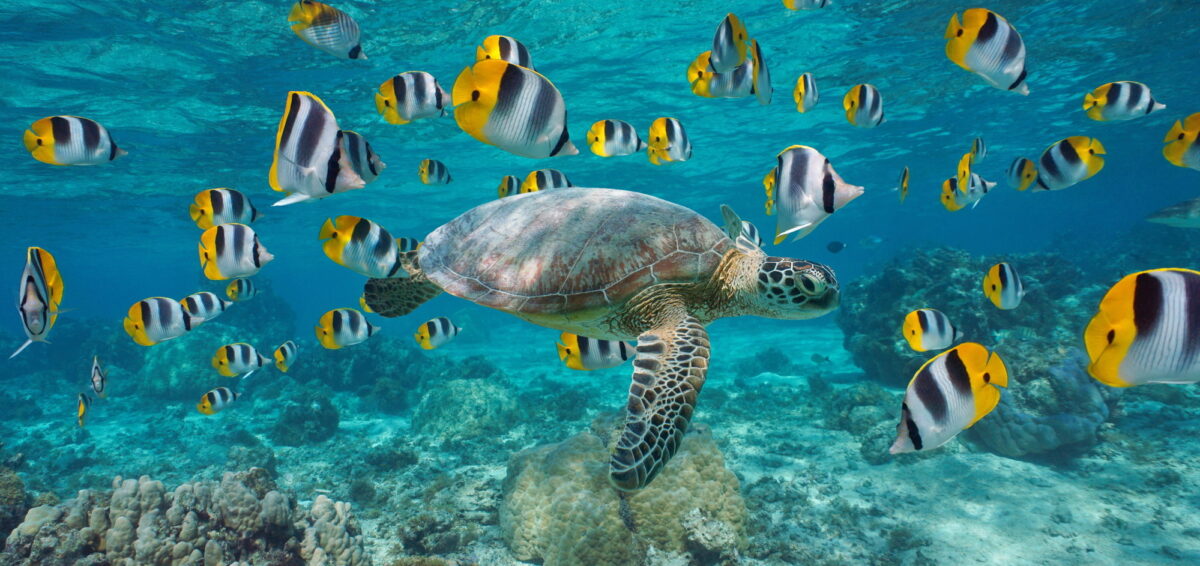healthy ecosystems
Protecting Ocean Habitats
Thriving fisheries rely on marine conservation strategies that include harvester input and seafood industry participation.
Today, less than 10% of the Earth’s ocean areas are protected in any kind of marine, benthic (sea bottom), or other protected area. Achieving the United Nations goal of 30% protection by 2030 will require a significant increase in marine conservation and protection.
Such a major global expansion of marine protected areas (MPAs) must be characterized by science-based decision making and thoughtful dialogue among all relevant parties, through an inclusive process that ensures that the needs of fishing communities within and impacted by the MPAs are balanced with those of the environment.
While they cannot replace fisheries management, well-designed MPAs can deliver tangible socio-economic benefits to communities, including improved catches within and near reserves, increased market value for responsibly sourced products, and strengthened community resilience.
MPAs also represent an important nature-based solution for protecting nature. The ocean faces many challenges, including rising water temperatures, expansion of other marine industries using the ocean, and pollution ranging from plastics to pesticides. For marine ecosystems, MPAs offer opportunities for ecological restoration, blue carbon, climate resilience, and preservation of ecosystem services. And those flourishing ecosystems will then provide healthy habitats for ocean wildlife – from whales and sharks to tunas and cod.
But in order to provide any of these benefits, MPAs need to be effectively designed, implemented, and managed – and collaboration is key.
Inviting everyone to the table
In all areas of our work, SFP recommends a collaborative-management approach to strategies for improving fisheries and aquaculture, supporting communities, and protecting nature. MPAs are no different. To be truly effective in the long term, MPAs should involve collaboration among and between local, national, and international actors. And, from the start, those actors should include all levels of the seafood value chain. As key users of ocean resources, the seafood industry must play a part in championing the protection and restoration of ocean habitats, which is critical for ensuring the long term sustainability of fisheries

Empowering local communities and organizations
MPAs that are designed without appropriate consultation, respect, and empowerment of local stakeholders risk undermining indigenous and local people’s rights, with significant negative implications for their long-term well-being. SFP’s past research has shown that effective MPAs result from processes that began with fishers defining their fishing grounds and working to identify where biodiversity conservation goals could be achieved with minimal impact on fishing.
This means not just consulting fishers, but also enabling their structured participation and leadership. SFP’s work with small-scale fishers and their communities to formalize participatory governance, empower fishing communities, build capacity and strengthen local institutions, ensure social safeguards, and create long-term co-management arrangements can provide a model for this collaborative approach.
Creative solutions that minimize disruption to traditional and responsibly managed fisheries and highlight the potential benefits of marine protection for future fish catches will help ensure buy-in from all stakeholders and create a constituency of support moving forward. The most successful MPAs include a mix of no-take zones where all fishing is prohibited, buffer zones where some level of fishing activity is allowed, and rehabilitation areas that prioritize rebuilding depleted fish stocks and degraded habitats.
Bringing in larger market players
At the national and international levels, market actors – including buyers, importers, and retailers – can play a pivotal role in supporting effective and equitable MPAs. Through buyer requirements and overall market forces, they can influence the way that MPAs are designed, implemented, and sustained in the long term.
SFP works to support transparent, participatory monitoring and adaptive management, using market incentives to reward real stewardship of natural resources. Through their commitments and standards, market actors can provide incentives and support for long-term and continuous engagement in monitoring and management of MPAs, to ensure enforcement of restrictions and prevention of harmful activities, such as IUU fishing.
The SFP advantage
SFP is committed to work with the fishing industry, communities, and other stakeholders to ensure MPA designation is effective, fair, and robust. Through our market relationships, we offer a unique ability to bring our corporate partners and other seafood industry actors to the table and help make them champions of marine protection. We provide industry information and guidance to understand the long-term ecological, social, and economic benefits of marine protected areas, and to recognize that thriving fisheries can and should be a key part of effective marine conservation.
Related publications and resources
Help us protect ocean habitats
Contact SFP to learn more about our work to ensure that all voices are heard in MPA design and implementation.
